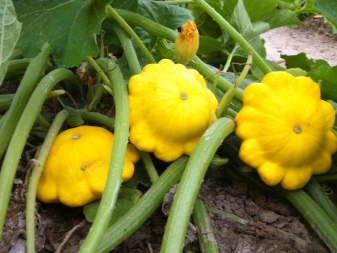What can be planted after tomatoes?

Compliance with the rules of crop rotation helps to protect plants from various diseases and active attacks from harmful insects, and also allows you to achieve good yields and high quality fruits. However, there are certain nuances here. So, when planting new plants, do not forget about the crops that grew in the same place earlier. It is they who can cause the development of diseases in new plantings and not only. In this article, we will analyze which plants can be planted after tomatoes and which cannot.

How do predecessors affect?
The predecessors have a huge impact on the condition of the soil. At first, if the same crops are cultivated on a constant basis on a site, then infectious fungi accumulate in the ground, due to which subsequently the fertility of the plant decreases, as does the quality of the resulting crop.
The same goes for plants belonging to the same family. As a rule, such crops are susceptible to the same diseases, and therefore they can easily become infected with a disease that remains from the plants that grew in the garden last year. For example, after the tomatoes that grew on the site last season, there is a high risk that the new plant will become infected with late blight.

Secondly, many plants, including tomatoes, sharply reduce the fertility of the soil, sucking out useful microelements and organic substances from it for their development. The depleted soil subsequently does not provide new plants with the required amount of nutrients, which affects them not in the best way: the ovaries begin to form worse, and the yield decreases significantly.

It should be said about such predecessor plants that, on the contrary, they are able to enrich the soil with useful macroelements, releasing them into the soil.
This usually applies to legumes, on the roots of which bacteria live. These same bacteria are capable of producing nitrogen and releasing it into the soil.
What can you plant?
Most often, it is recommended to plant cucumbers after tomatoes, and this applies to plants grown both in greenhouse conditions and in open ground. These crops have few of the same diseases, moreover, they extract different organic substances from the ground, and therefore the yield at the end of the season will be good. However, for the full growth of cucumbers, one must not forget about soil fertilization.

It is also allowed to plant other plants, for example, cabbage, squash, salads, zucchini, watermelon or melon. However, the last two melons are very demanding on the soil, and their root system is located at about the same depth as that of tomatoes. For this reason, they need a large amount of fertilizing, otherwise they will suffer from a deficiency of necessary substances and will not give a high-quality harvest.


If we are talking about a greenhouse where tomatoes were previously grown, then before winter it is recommended to plant mustard in the same place, since this plant is one of the best siderates.

The mustard root system actively assimilates from the soil those nutrients that do not dissolve well, and therefore it will become an excellent green top dressing, which will improve the quality of the soil and contribute to its structuring. The same plant can also be planted outdoors.
For fruit change, you can also use onions or garlic, which grow well after tomatoes and practically do not have the same diseases with it.Legumes are also allowed for planting in such places, since they are not particularly demanding on the soil. Soybeans, cowpeas, peas and other plants in this family are excellent options for growing in the first year after nightshade. They will grow great on the site and, with proper care, will delight you with a good harvest.


Plants such as beets, turnips, radishes and rutabagas are also great for planting. These plants are demanding on the condition of the soil, but they have an oblong root crop, and therefore draw all the necessary substances from deeper layers of soil than tomatoes.

Such plants are also suitable for planting which are often used in the preparation of various dishes as a spice. These landings include dill, basil, coriander, celery and other plants. They do not have common diseases with tomatoes, and therefore they will grow very actively and without problems.

What shouldn't be planted?
In the place where tomatoes grew last year, it is best not to plant plants that belong to the nightshade family, as they have common diseases. They can be grown in this place only after 3-4 years - approximately this amount of time is required for the earth for the complete recovery and death of phytophthora spores. Otherwise, there is a huge risk that the new plants will get sick and are unlikely to please you with a good, high quality harvest.
The nightshade family includes the following plants, in addition to tomato: potatoes, peppers, tobacco, petunia, eggplant and physalis. All these crops have common pests, namely the wireworm and the Colorado potato beetle, and diseases - late blight and rot.

Even with the complete disinfection of the soil, there is no one hundred percent guarantee that the larvae of harmful diseases and the fungus have been completely eliminated, since some of them are distinguished by special vitality and are quite capable of activating.
Strawberries and strawberries for the next few years should also not be planted where tomatoes previously grew, otherwise you should not expect a good harvest. These berries, planted the year after tomatoes, are often sore. In addition, they lack various nutrients and useful minerals, which were previously actively absorbed by tomatoes for their development. In such cases, even regular plant feeding is unlikely to solve the problem.












The comment was sent successfully.